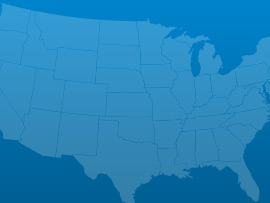NEW JERSEY MOSTLY DEPENDS ON NUCLEAR POWER AND NATURAL GAS FOR IN-STATE ELECTRICITY GENERATION. The Oyster Creek nuclear reactor is the oldest operating nuclear power plant in the U.S. and is scheduled to shut down in 2019; this lost capacity will need to be made up. New Jersey is reducing its reliance on coal-based electricity generation by planning to add 2,300 megawatts of natural gas-powered generation. Already about 3 of every 4 New Jersey households use natural gas for home heating. In terms of cost, New Jersey has one of the highest energy costs per kilowatt hour in the U.S. After Superstorm Sandy, New Jersey updated its Energy Master Plan in 2015 to address emerging issues and energy shortage
problems felt by 2.8M New Jersey customers. The State has approved $938.7M for gas utility upgrades and mitigation projects and an additional $280M is pending.
 Bridges
Bridges Dams
Dams Drinking Water
Drinking Water Energy
Energy Hazardous Waste
Hazardous Waste Levees
Levees Rail
Rail Roads
Roads Solid Waste
Solid Waste Transit
Transit Wastewater
WastewaterA: Exceptional, B: Good, C: Mediocre, D: Poor, F: Failing, ?: Incomplete
Each category was evaluated on the basis of capacity, condition, funding, future need, operation and maintenance, public safety, resilience, and innovation
Aviation
24 public-use airports
Bridges
624 of the 6,566 bridges are structurally deficient
Bridges
$172.20 million in bridge funds came from the Federal Highway Bridge Fund in 2011
Dams
100% of the state regulated dams have an Emergency Action Plan
Dams
218 high hazard dams
Drinking Water
$7.9 billion in drinking water infrastructure needs over the next 20 years
Energy
0.868 gigawatt-hours of renewable energy every year, ranking it 46th
Hazardous Waste
111 sites on the National Priorities List
Inland Waterways
360 miles of inland waterways, ranking it 23rd nationally
Levees
126 miles of levees
Ports
152.7 million short tons of cargo in 2012, ranking it 4th nationally
Public Parks
$323.0 million of unmet needs for its parks system
Rail
18 freight railroads covering 983 miles across the state, ranking 40th nationally by mileage
Roads
6,822 of the state’s 39,272 public roads are major roads, and 35% are in poor condition
Roads
$3.6 billion a year in costs to motorists from driving on roads in need of repair, which is $605 /yr per motorist
Schools
$1.0 billion in estimated school infrastructure funding needs
Transit
407 million annual unlinked passenger trips via transit systems including bus, transit, and commuter trains
Wastewater
$32.5 billion in wastewater infrastructure needs over the next 20 years

March 03, 2017
As the President’s repeated in his address to Congress his pledge to dramatically increase infrastructure spending to the tune of $1 trillion, various Congressional Committees

March 01, 2017
On Tuesday night, President Trump addressed a joint-session of Congress for the first time in his presidency. Infrastructure was among the many issues he discussed.

February 28, 2017
U.S. motorists set a new record for vehicle miles travelled (VMT) in 2016, driving over 3.2 trillion miles, an increase of 70 billion miles from

February 17, 2017
Romantic dates, the Grammy awards and celebrating black history are not the only milestones of this week; the Oroville dam crisis in California and the